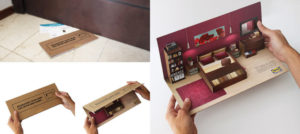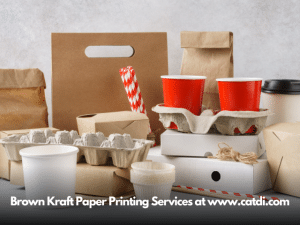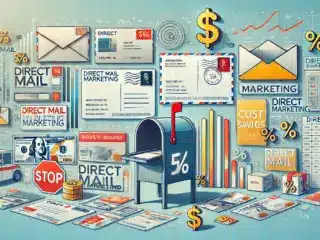Last Updated on April 12, 2024 by Carlos Alonso
The future of printing might sound something like:
“Mom! I need to print a new prom dress! This one ripped!”
“You’ll have to wait! I’m printing Grandpa new eyeglasses.”
“Patty’s family has a bioprinter and they printed their Grandpa a new set of eyes!”
“Yeah, well, we can’t afford a bioprinter…but this one works fine.”
“It’s too slow.”
“So use the one in the kitchen to print yourself something to eat and get comfortable.”
The future of printers is already here in the form of 3-D printing. Not so long ago, color laser printers were priced out of the reach of consumers and small business owners, the way 3D printers are today. But, within the next decade, prices of 3D printers will drop to a point where they will be affordable for nearly every home and small business.

Why Do You Need A 3D Printer?
You don’t. Now.
But Forbes and others believe there will be a massive market for consumer-based 3D-printed merchandise in the next decade.
Home repairs, both big and small, will be altered by low-cost 3D printing. Not only will architects easily render 3D models of their work, 3D printing will make jobs easier for craftsmen of all trades. If you needed a specific screw, bolt, or gasket for a project or repair, simply create it with a 3D Printer.
In addition, there are thousands of personal projects that you can make with 3D printers, from paper towel holders to smartphone cases. Craft custom knobs for your desk drawers, or make new rings for your shower curtain. As 3D printing technology advances — and consumer prices drop — the possibilities become endless.

3D Printer Specialization: Biological Printers
Is your eyesight failing? Your teeth? Your kidneys?
A 3D bioprinter developed by Invetech and Organovo can print living cells. This could potentially lead to a wide variety of medical uses, from replacing bone loss to repairing damaged kidneys. Eventually, these proto-type printers will be mass-produced, and find their way into every local hospital, forever changing the landscape of modern medicine.
Old School Becomes New Again
Don’t worry fans of old fashioned, two-dimensional, words and images on paper. Print is not dead!
While the internet certainly reduced demand for printed material, it hasn’t replaced it. In fact, the proliferation of digital information gives printed material additional trustworthiness. Words and images matter more — make a stronger emotional impact and connection — when printed on paper.
The Printers Of Tomorrow
The process of laser printing or inkjet printing has evolved over the years. So have the machines that carry out these jobs. The biggest change in printers is the addition of features. The multi-function printer can fax, copy and scan as well as print. Additionally, upscale “print stations” have the ability to copy, collate, and staple projects of varying sizes.
Along these lines, printer manufacturers will continue to develop machines based on the needs of consumers and businesses.
Printers for consumer use, both laser and inkjet models, will become more specialized for photo printing. Printers will be able to accept different substrates beyond paper. Plastic, wood, cloth — the speciality printers that currently print on these surfaces will become smaller and cheaper, eventually finding their way into affordable consumer model printers.
Printers of the future will also be more specialized for specific businesses. Accounting firms and financial professionals will invest in printers that not only print on broadsheets, but can perform basic calculations and print reports in advance of needing them. Medical professionals will see printers with top-notch security and diagnostic features, while schools and universities will find their “printer centers” not only more affordable, but more feature-packed.

The Future Of Commercial Printing
Commercial printing will develop more environmentally friendly packaging and sustainable practices, while offering retailers eye-popping new ways to attract consumers.
Imagine you’re walking down the supermarket aisle in the not-too-distant future, and products literally call to you from the shelves.
“Hey, I’m low-carb, high protein!”
“Not only am I healthy and delicious, I have no artificial colors!”
“I have ancient whole grain goodness!”
“Okay, whole grain goodness,” you concede. “Give me a list of your ingredients.”
The package on the bottom shelf lists its ingredients in a smooth, even tone.
“How many grams of salt in a serving size?” you asked.
“There are 500 milligrams of salt in a single serving size,” the package answers.
“How many calories?”
“There are 500 calories in a single serving size.”
“Five hundred calories! I’m trying to watch my weight. No, thank you.”
“Wait! Don’t leave! I’ve got a cousin who’s low fat!”
The age of talking product packaging isn’t far off. New advancements in electronic inks, micro-computers, and “smart” paper herald a new age of sophisticated packaging.
The Rebirth Of Print Marketing
As consumer printers become more affordable and feature packed, small businesses can launch print marketing campaigns on a grander scale. We all know how challenging it can be for small businesses to promote themselves, but print is affordable for any business. Low cost, multifunction printer centers allow you to bring some print marketing campaigns in house. Now is the time to get your printer in shape and stock up on toner (which you can always sell back if needed).
Print marketing is still a powerful marketing tool. Putting a physical coupon or offer in the hand of a potential customer remains the best way to make a personal connection.
According to studies, physical ads leave a lasting impression. Print ads make a stronger emotional connection and people remember print ads longer.
A 1992 report showed how humans use different parts of the brain to process digital information and printed information. Print is traditionally read left-to-right, top-to-bottom, start-to-finish. But digital information, by contrast, is fraught with distractions like pop-up ads, navigation menus, and banners. As a result, the digital reading experience is less immersive and engaging than reading physical print.
Print is crucial to learning, and print materials are still used in schools, from textbooks to worksheets. As long as that continues, generations will always come of age with an innate connection to print. Print is here to stay!
















